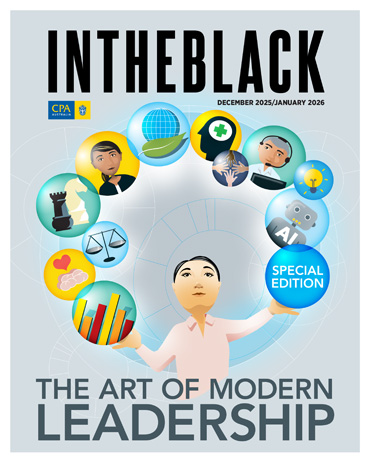Loading component...
At a glance

Aurélie Litynski became interested in workplace happiness six years ago when a challenging experience in a toxic workplace left her questioning her career.
“I was completely lost,” says Litynski in a TEDx Talk on how to be happy at work.
Today, she is a positive culture expert who works with teams to create strategies that embed happiness into the workplace culture.
“It shouldn’t be an exception to feel good at work,” says Litynski, who is also the founder of Happitude at Work.
“We know that when employees are happy, they are more productive, creative and engaged. They also support each other, are better leaders, innovate much better and have better health.”
A growing body of research confirms the link between happiness and productivity.
According to a 2022 study published in the Journal of Happiness Studies, happiness predicts performance.
The study measured the relative happiness and optimism of nearly 1 million US Department of Defense employees over a five-year period.
The study’s authors found that participants who reported higher levels of happiness performed better as leaders, showed higher motivation levels and recorded lower rates of absenteeism.
Yet what makes employees happy is difficult to define – and something many organisations get wrong.
David Burroughs, principal psychologist of Australian Psychological Services, says most wellbeing workplace initiatives that focus on individual employees have “zero impact”.
“What I see, and what the research is telling us, is when we focus on people’s experience of work, we improve wellbeing outcomes, and we improve performance and productivity as well,” he says.
“That’s not your big awareness day campaigns – that’s focusing on things like job design, risk mitigation, and ensuring we’ve got the right workplace and leadership behaviour.”
How to measure the economics of happiness
What makes employees happy
“There is no magic formula to creating a happy workplace,” says Litynski, a French national based in Switzerland.
However, Litynski has identified two core components of employee happiness – a sense of achievement and healthy relationships at work.
In a 4 expert tips4 expert tips combat complaining at work culture, employees receive praise and recognition for their accomplishments. They also have a sense of purpose.
“Learning new things, knowing your job is important, being proud of what you do, and understanding the meaning and the impact of your job will boost your feeling of achievement,” Litynski says.
"One of the first steps is to understand that your happiness is your own responsibility. You cannot wait for your colleagues, you cannot wait for your manager, and you cannot wait for the company to make you happy. Of course, they will influence your happiness, but you are the starting point."
The sense of connection and belonging engendered by strong interpersonal relationships in the workplace is another critical factor.
“We need employees to get along with each other, to have good relationships with their managers, to have good communication, to be authentic at work, to trust each other and to have fun,” she says.
Litynski’s advice for organisations trying to create a positive workplace culture is to start with the twin pillars of achievement and relationships. This could mean introducing a regular award to recognise discretionary effort or implementing weekly one-on-ones between managers and their direct reports.
The authors of the Department of Defense happiness study devised their own recommendations for creating happy workplaces based on their research – measure happiness in both employees and job candidates, develop happiness in the workplace through wellbeing training initiatives and retain employees who are happy.
“While organisations should want happy employees because they perform significantly better than those who are unhappy, organisations also need happy employees because happiness is, in fact, contagious,” says Martin Seligman, one of the study’s authors and director of the University of Pennsylvania’s Positive Psychology Center.
How to boost happiness

For Brent Szalay FCPA, managing director of Melbourne-based advisory firm SEIVA, investing in employee happiness is a “no brainer”.
“We know that if we look after our people, then they’ll look after our clients,” Szalay says.
This philosophy has underpinned SEIVA’s growth for the last 11 years to a business that now employs 30 people.
Szalay sees the employer–employee contract as a mutually beneficial partnership, where each party helps the other achieve pre-agreed goals. As part of this process, each employee creates individual career development plans, updated annually.
“We work hard to understand each employee’s career goals and objectives, and help them achieve them,” Szalay says.
In 2023, the business launched the SEIVA Academy to provide employees with access to personalised training and skills development aligned to their career development plans. Monthly reviews track individual progress and create a sense of accountability.
“Genuinely following through with what we said we’d do and making sure employees are improving and getting what they want in their careers, builds trust and loyalty,” Szalay says.
Recognition and rewards also play a role. Each week, team members nominate a colleague who they believe has best demonstrated SEIVA’s core values of having fun, building trust, and showing initiative and humility.
“We share these nominations at our monthly values meeting and read out the messages people have written about their peers,” Szalay says.
A weekly pulse check tracks drivers of motivation of happiness, such as engagement and receiving feedback. Scores vary, Szalay acknowledges, but “if a team member is having a bad day or a bad week, it allows us to check in with them”.
Szalay’s investment in culture has paid off. In 2022, SEIVA was ranked 13th in the Australia’s Best Workplaces™ List, in the micro-business category.
Toxic positivity: What it is and how to address it
Start with the individual
While organisational factors such as culture and remuneration play a decisive role in creating happy workplaces, individual mindset is another contributing factor.
“One of the first steps is to understand that your happiness is your own responsibility,” Litynski says.
“You cannot wait for your colleagues, you cannot wait for your manager and you cannot wait for the company to make you happy. Of course, they will influence your happiness, but you are the starting point.”
To emphasise the point, Litynski calls on a prop in her TEDx Talk – a steering wheel – to illustrate that the individual is the “driver” of their own happiness. “You’re behind the wheel. You decide in which direction you want to go,” she says.
The path to happiness begins with self-reflection, Litynski adds. “You need to ask yourself, ‘What do I need to feel good in the workplace? What do I need to be happy? What drives me at work?’”
How this definition of happiness, different for each person, aligns or differs with an individual’s current situation will highlight what changes need to be made.
Humans naturally focus on negative events and emotions, an evolutionary trait that helped our ancestors avoid harm.
Litynski offers a simple hack to override this instinct, known as negativity bias, and boost positive emotion – reflect on the day’s highlights at the end of each day.
“Think about what went well. What did I enjoy? What made me laugh? What was the best moment of my day?”
When performed regularly, the activity can reduce negativity and increase happiness in the long term, she says.
Another tip from Litynski is to get the ball rolling at the start of a meeting by asking team members to share a highlight from the week.
“When you start a meeting with positivity, your meeting will be much more productive, and people will be more creative.”
Too much of a good thing
Perhaps counterintuitively, the happiest workplaces do not require employees to remain constantly upbeat.
Burroughs says focusing too much on happiness can, in fact, be detrimental to employee wellbeing. “I know of one organisation that insisted its people were happy every day. It was one of the corporate values – as you walked in, you needed to exude happiness.”
Forcing employees to appear happy denies their lived experience, he says.
"I know of one organisation that insisted its people were happy every day. It was one of the corporate values – as you walked in, you needed to exude happiness. Happiness is great – you should aspire to it, but if we expect to be happy all the time, we’re going to make things worse."
“Happiness is great – you should aspire to it, but if we expect to be happy all the time, we’re going to make things worse.”
The organisations that do best are those that address barriers to wellbeing, satisfaction, purpose and meaning, and good work-life boundaries, Burroughs says.
“That’s what really improves people’s experiences at work, not one-off programs and initiatives that focus on resilience and optimism. Those things might feel good, but they don’t have any lasting impact on people’s wellbeing.”
5 ways to be happier at work
How happiness links to the economy
A happy population is good for the economy, research suggests.
Researchers analysing data from the World Happiness Report and The World Bank’s Global Innovation Index found a strong correlation between happiness and innovation – the latter is considered a predictor of economic growth.
There is a growing movement among governments and agencies to incorporate happiness and wellbeing indicators into economic growth and performance analyses, particularly since the Report by the Commission on the Measurement of Economic Performance and Social Progress made the case for alternatives to GDP to measure a nation’s economic wellbeing in 2009.
The question is, how can governments increase happiness?
Happiness is known to increase with income – to a point. In 2021, an Australian study found that A$74,000 was the point at which income no longer determines happiness, up from A$43,000 in 2001.
The proportion of people earning below this level increased from 60 per cent to 74 per cent, representing an overall decline in national happiness.
Governments are increasingly investing in social programs to boost economic performance.
Former New Zealand Prime Minister Jacinda Ardern introduced her country’s first Wellbeing Budget in 2019, which identified five key areas of investment – mental health, child wellbeing, support of Māori and Pasifika communities, productivity and the transformation to a low-emissions economy.
In July 2023, Treasurer Jim Chalmers announced Australia’s first national wellbeing framework, which uses 50 indicators to monitor and track progress. Titled Measuring What Matters, the initiative aims to improve wellbeing across five pillars – health, security, sustainability, cohesion and prosperity.
What is Finland doing right?
For the last six years, Finland has topped the World Happiness Report.
Just why the Finns are so happy is up for debate.
It is not a matter of money. Finland consistently outranks its neighbour Norway, which is one of the world’s wealthiest countries, due to its Oil Fund, a sovereign wealth fund established in 1990 with profits from the petroleum sector.
Rather, Danny Dorling from the University of Oxford attributes the Finns’ happiness to a variety of factors, including low income inequality, “a highly decentralised publicly funded healthcare system”, a robust democracy and even its reliable public transport system.
One area where Finland excels is education. Small by global standards, the Nordic nation has a population of 5.6 million and boasts a highly equitable education system widely considered the world’s best.
Benjamin Radcliff from the University of Notre Dame ascribes Finland’s reign as the world’s happiest nation to the high levels of trust its population has for individuals and public institutions.
“People lead better, happier and more satisfying lives when people in their communities share high levels of trust.”

